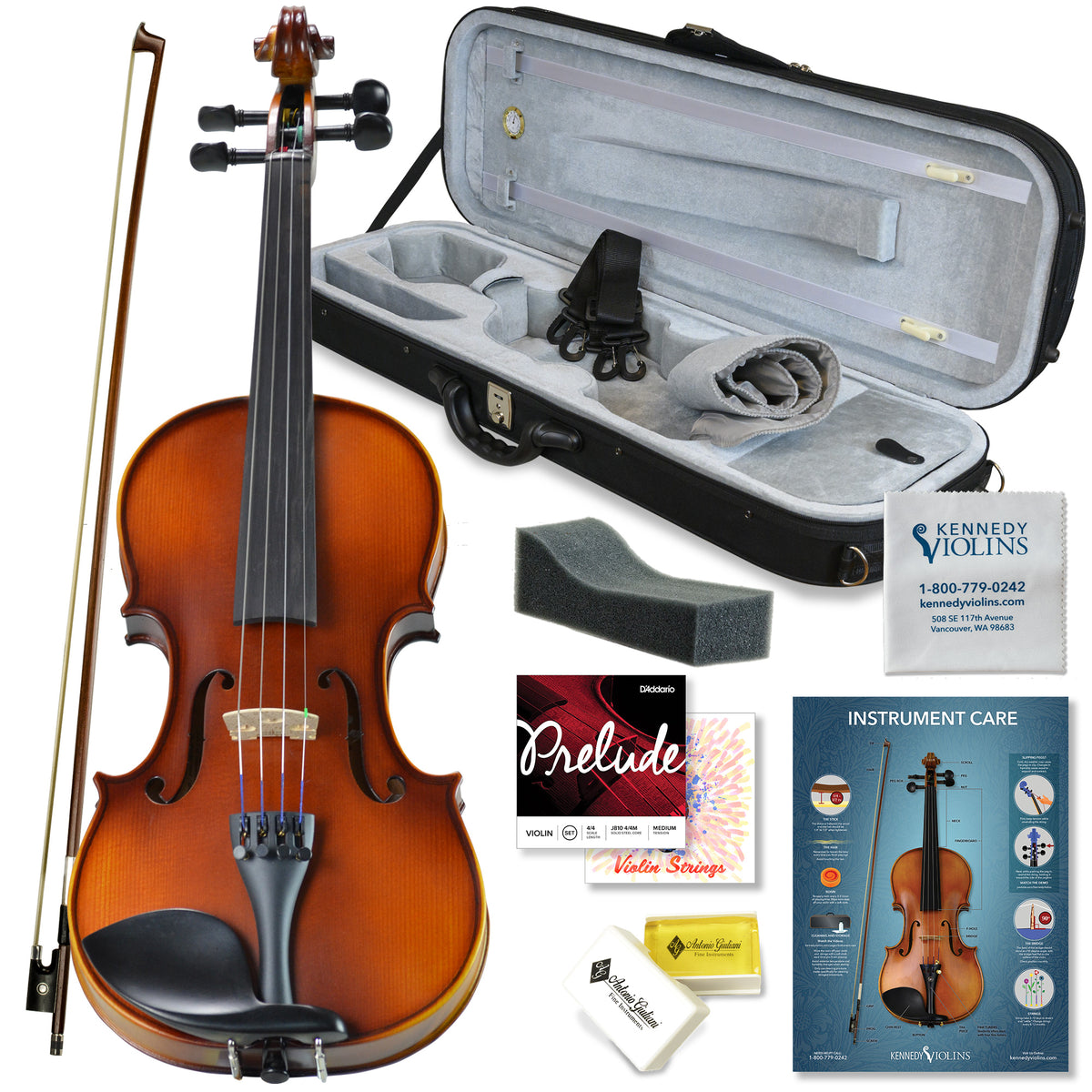How To Learn The Violin Step By Step
At Kennedy Violins, we understand the excitement and challenges that come with beginning your journey with the violin.
Whether you're completely new to the instrument or thinking about starting, our goal is to put you on the right track to success. In this guide, we'll walk you through seven essential steps to help increase the likelihood of a rewarding experience with the violin.
Understanding the Violin's Unique Challenges
The Learning Curve
The violin is renowned for its demanding initial learning curve, contrasting sharply with instruments like the piano, where beginners can quickly grasp basic melodies.
This initial difficulty can be daunting; the key to mastering the violin lies in understanding and embracing its complexities from the start. Mastery requires patience, consistent practice, and a resilience to overcome early frustrations.
Remember, the journey of learning the violin is a marathon, not a sprint. Embracing the process, with its ups and downs, will lead to a rewarding musical experience.
Step 1: Acquiring Your Instrument
Selecting your first violin is a significant step on your musical journey. A complete violin outfit should include not only the instrument but also essential accessories like a case, bow, rosin, and a shoulder rest.
This comprehensive setup ensures you have all necessary tools at your disposal from day one. The quality of the strings on your violin can greatly affect your learning experience; reputable brands such as D'Addario, Pirastro, and Thomastik provide high-quality strings that enhance sound and playability.
Investing in a quality outfit from the start will pay dividends in your learning efficiency and enjoyment of the instrument.
Step 2: Ensure Proper Setup
Importance of Professional Assembly

A professionally set up violin makes a significant difference. Ideally, your violin should be ready to play upon arrival, avoiding the pitfalls of self-assembly.
A well-set-up instrument prevents common issues and supports a smoother learning process.
Buying from a company that has professional luthiers setting up their instruments up in the USA ensures that the violin comes to your door ready to play.
Step 3: Taking Violin Lessons
The Value of Formal Instruction

Personal instruction is invaluable in the early stages of learning the violin.
A qualified teacher can offer direct feedback on your posture, bow hold, and technique, preventing the development of bad habits that can hinder progress. Lessons, whether in-person or online, provide structured learning, personalized guidance, and motivation.
Even a limited number of lessons can set a solid foundation for your practice. If regular lessons are out of reach, consider workshops, online courses, or lesson packages that can offer flexibility while still providing expert guidance.
Step 4: Utilizing Online Resources
Finding Trusted Guides
If lessons aren't an option, turn to reputable online sources for guidance. Kennedy Violins offers numerous instructional videos, from basic techniques to more advanced lessons.
However, exploring various educators can help find a teaching style that resonates with you.
Step 5: Selecting the Right Study Materials
Books for Beginners

The right study materials can significantly impact your learning trajectory. Beginners should seek out a combination of songbooks and scale books designed for novice players. Songbooks should progress from simple melodies to more complex pieces, offering a sense of achievement and growth.
Invest in beginner-friendly books, including a collection of easy songs and a scale book. Essential Elements and the Suzuki series are highly recommended for their effectiveness and widespread use.
These resources, combined with your practice routine, form the backbone of your early violin education.
Step 6: Committing to Practice
Consistency is Key
Consistent practice is the cornerstone of mastering the violin. Establishing a regular practice schedule, ideally an hour a day, four to five times a week, will accelerate your progress.
Creating a dedicated practice space where your violin is easily accessible encourages regular engagement with the instrument. This consistency over time transforms the daunting into the doable, making the complex aspects of violin playing more manageable and enjoyable.
Step 7: Structuring Practice Sessions
Effective Practice Techniques
A well-structured practice session is more than just playing through pieces from start to finish.
A well structured practice routine looks like:
- Beginning with warm-up exercises focusing on bow hold and violin posture to reinforce good habits.
- Incorporating scales and arpeggios to improve finger placement and intonation.
- Working on pieces, focus on challenging sections, practicing them slowly and methodically before integrating them back into the whole piece.
This targeted practice approach ensures efficient improvement and a deeper understanding of the music you're learning.
Taking the next steps...
Embarking on your violin journey is an exciting adventure filled with challenges and rewards. By following these steps, you'll be well on your way to achieving your musical dreams. Remember, patience, consistency, and the right resources are key to your success.
Kennedy Violins is here to support you every step of the way, from selecting your first violin to mastering your favorite pieces. Happy playing, and welcome to the world of violin music!

















